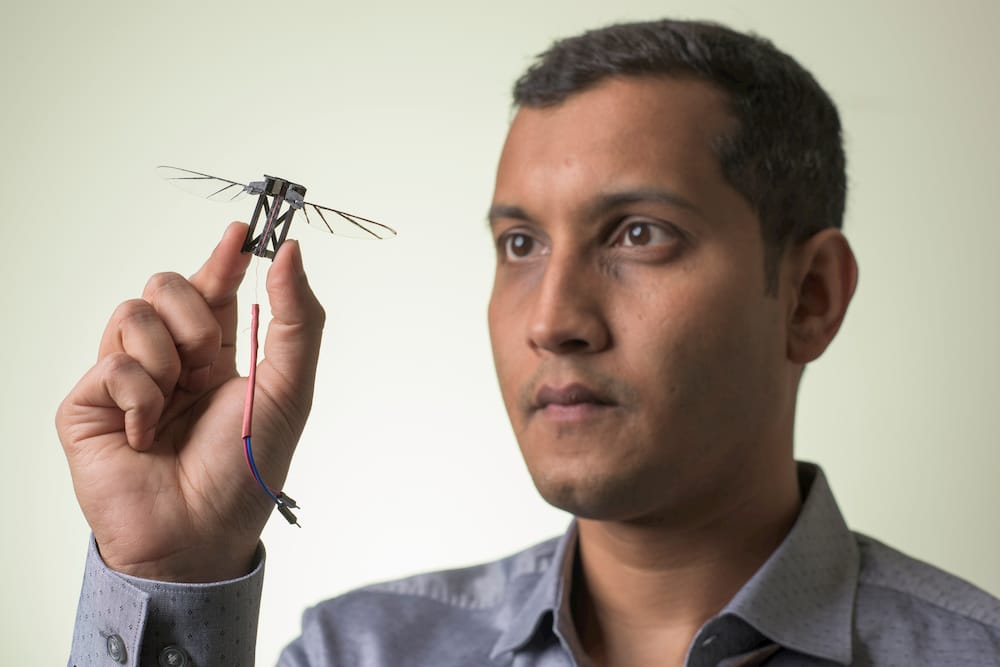A honey of an experiment at UNSW suggests that bumblebee-haviour could be the model for the flying drones and autonomous vehicles of the future.
A UNSW Canberra team has discovered that bumblebees are aware of their own size, and can adapt their flight speed and position to fly through gaps – the first time flying invertebrates have shown any sign of such behaviour. Previous research suggested that the perception of self-size was a complex process, only found in animals with large brains.
“Our discovery shows that these [complex processes] could actually come from very simple basic brains and neural systems,” lead researcher Dr Sridhar Ravi, senior lecturer in the School of Engineering and Information Technology at UNSW Canberra, said.
This could be a bee-utiful breakthrough for robotics research. Scientists are trying to create autonomously operating robots – machines that can independently determine whether they can fit through windows or doorways, and adjust their flight accordingly, rather than being cumbersomely steered through.
“[This discovery] tells us that concepts such as perception of self-size can actually be encoded within a very simple neural infrastructure,” Dr Ravi said. “Insects are fantastic models for robots because they have exceedingly small brains and yet they’re able to perform overly complex tasks.”
The UNSW Canberra team trained bumblebees to fly through an obstacle course: a tunnel blocked by gates with different-sized holes. The scientists were “amazed” to see that in some cases the bees even flew through small gaps sideways when they could not fit through head-on.
“Each individual bee is actually aware of its own size, and tries to perceive the world around it, [and consider] whether an obstacle can be passed or not … which is quite remarkable,” Dr Ravi said.
“Similar to humans and other vertebrates, even insects like bees have a very accurate sense of how large they are… We never expected that an animal of that small size, with an even smaller brain, is able to comprehend its own body size, and use that information while flying.”
Researchers hope to use the flight of the bumblebee as a model for the next generation of drones and autonomous vehicle technology to fly in real-world conditions.
“Our challenge now is to see how we can take this and apply a similar coding to future robotic systems, enhancing their performance in the natural world,” Dr Ravi said.
The research, published in Proceedings of the National Academy of Sciences of the United States of America (PNAS), is a collaboration between researchers at UNSW Canberra, Bielefeld University, the Max Planck Institute, Brown University. and the University of California.



